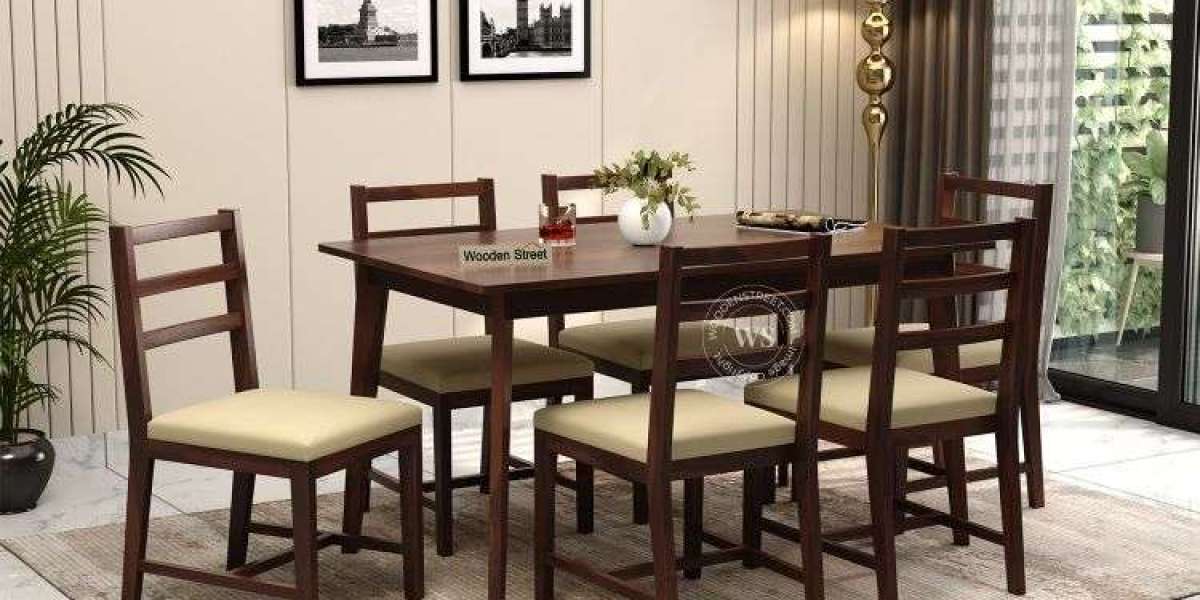Behind its polished surface and elegant design lies a story of meticulous craftsmanship, thoughtful design choices, and skilled artistry. Understanding how a dining table is crafted can deepen your appreciation for the piece that plays such a central role in your home.
The Foundation of Quality Materials
Every perfect dining table begins with the right choice of materials. Skilled craftsmen select wood, metal, or a combination of materials not just for their appearance but for their durability and workability. Hardwoods like oak, walnut, or teak are often chosen for their strength and rich grain patterns. These materials are carefully inspected to ensure they are free from defects that could compromise the table’s longevity.
For those who prefer a more modern style, metal frames or glass tops may be used, each requiring its own unique set of skills to craft. Regardless of the material, the selection process is intentional, ensuring that the finished dining table is both aesthetically pleasing and built to last.
Precision in Design and Proportion
Crafting a dining table involves more than simply joining materials together. Proportion plays a crucial role in ensuring the table is functional and visually appealing. The height must accommodate comfortable seating, the width must allow for adequate serving space, and the overall size must suit the room it is placed in.
Experienced artisans often create scale models or detailed sketches before beginning construction. This stage ensures that every curve, angle, and joint is perfectly aligned, creating a dining table that is as comfortable to use as it is beautiful to look at.
The Art of Joinery
One of the hallmarks of exceptional craftsmanship lies in the joinery techniques used to assemble the dining table. Rather than relying solely on screws or nails, skilled woodworkers use methods such as mortise-and-tenon joints, dovetails, or dowel connections. These techniques not only provide strength but also allow the table to age gracefully without loosening over time.
Joinery is often hidden from view, but its quality determines the table’s stability. A well-crafted dining table can endure decades of use without wobbling or weakening, standing as a testament to the artisan’s expertise.
Detailing and Finishing Touches
Once the structure is complete, the focus shifts to detailing. This stage brings out the character of the dining table through sanding, carving, and shaping. Smooth edges, beveled corners, or intricate inlays can elevate a simple design into something remarkable.
The finish is equally important. Whether it’s a natural oil that highlights the grain, a matte varnish for understated elegance, or a high-gloss polish for a contemporary look, the finishing process protects the surface while enhancing its beauty. Multiple layers may be applied, each carefully dried and buffed, to create a flawless final appearance.
Balancing Beauty with Functionality
While craftsmanship emphasizes aesthetics, functionality remains equally important. A perfect dining table should accommodate both daily meals and special occasions. Some designs incorporate extendable leaves to adjust seating capacity, while others prioritize a streamlined look for smaller spaces.
Artisans understand that the best dining table designs merge practicality with artistry. This balance ensures that the table remains a cherished part of the home for years, adapting to the changing needs of its owners.
Sustainability and Ethical Crafting
In recent years, there has been a growing emphasis on sustainable craftsmanship. Many artisans now choose responsibly sourced materials, using reclaimed wood or eco-friendly finishes to reduce environmental impact. Ethical crafting not only benefits the planet but also adds a deeper sense of value to the finished piece, knowing it was made with respect for natural resources.
This commitment to sustainability often extends to the crafting process itself, where waste is minimized, and every offcut is put to use. The result is a dining table that embodies not just beauty and quality but also responsibility.
The Human Touch
Perhaps the most defining feature of a well-crafted dining table is the human touch. Machines can cut, shape, and polish materials with precision, but it is the artisan’s hand that breathes life into the piece. The ability to feel the grain, adjust pressure while sanding, or subtly alter a curve based on instinct is something that no machine can replicate.
This human connection is why handcrafted dining tables often carry a warmth and individuality absent in mass-produced furniture. Each slight variation in texture or tone tells the story of the person who made it.
A Lasting Legacy
A perfect dining table is built not just for the present but for generations to come. High-quality craftsmanship ensures that it can withstand the wear of daily life while maintaining its structural integrity and charm. Over the years, it may gather marks and scratches, but rather than detracting from its beauty, these signs of life often enhance its character.
Many families pass down their dining tables as heirlooms, carrying with them stories of countless shared meals and cherished moments. This lasting legacy is a direct result of the care, skill, and artistry that went into crafting the piece in the first place.
Conclusion
Exploring the craftsmanship behind a perfect dining table reveals a world of skill, patience, and passion. From the careful selection of materials to the precision of joinery and the artistry of finishing, every step in the process contributes to a piece that is both functional and beautiful. A dining table is more than a surface to eat on; it is a testament to the artisan’s dedication and a focal point for the stories and connections that define a home.








